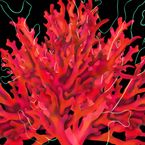The impact of climate change on human foetal development and brain activity
Survivors of the 2018 Camp Fire – the worst wildfire in California’s history – have been exposed to “climate trauma” and changes in brain activity. The trauma triggered post-traumatic stress disorder and depression, and a study conducted using electroencephalography (EEG) by experts at the University of California, San Diego, showed significant differences in the cognitive functioning of the survivors’ brains. Increased activity occurred particularly in areas of the subjects’ brains that cope with unwanted and often distressing thoughts.
The study by researchers from New York’s Queens College and Tufts-New England Medical Centre, among others, found that those at risk in their foetal lives due to 2012’s Hurricane Sandy were twice as likely to be diagnosed with anxiety disorders and almost four times as likely to have attention deficit and disruptive behavioural disorders. Girls were more likely to suffer from anxiety and depression, while boys were more likely to suffer from ADHD. The mothers of the subjects experienced stress from the hurricane’s impact before and after giving birth. The mothers’ stress was transmitted to their children, e.g. through the placenta, which provides oxygen and nutrients to the foetus.
In the likely scenario of high emissions and climate warming by 4.4°C, before 2099, 41% of terrestrial vertebrates will experience extreme thermal events. Amphibians and reptiles will suffer the most. Heat stress causes dramatic extinctions and can destroy entire ecosystems. It is worth mentioning that extreme temperatures kill more than 5 million people every year.


























